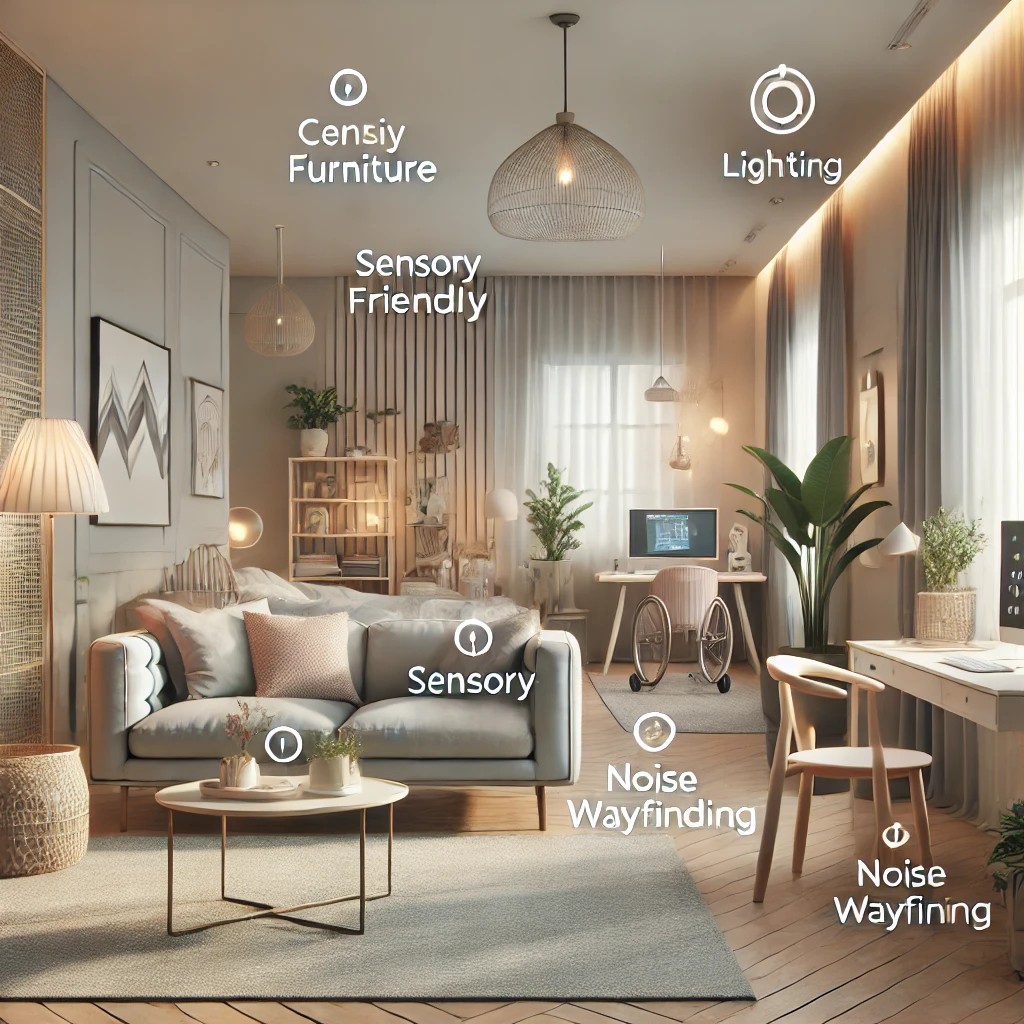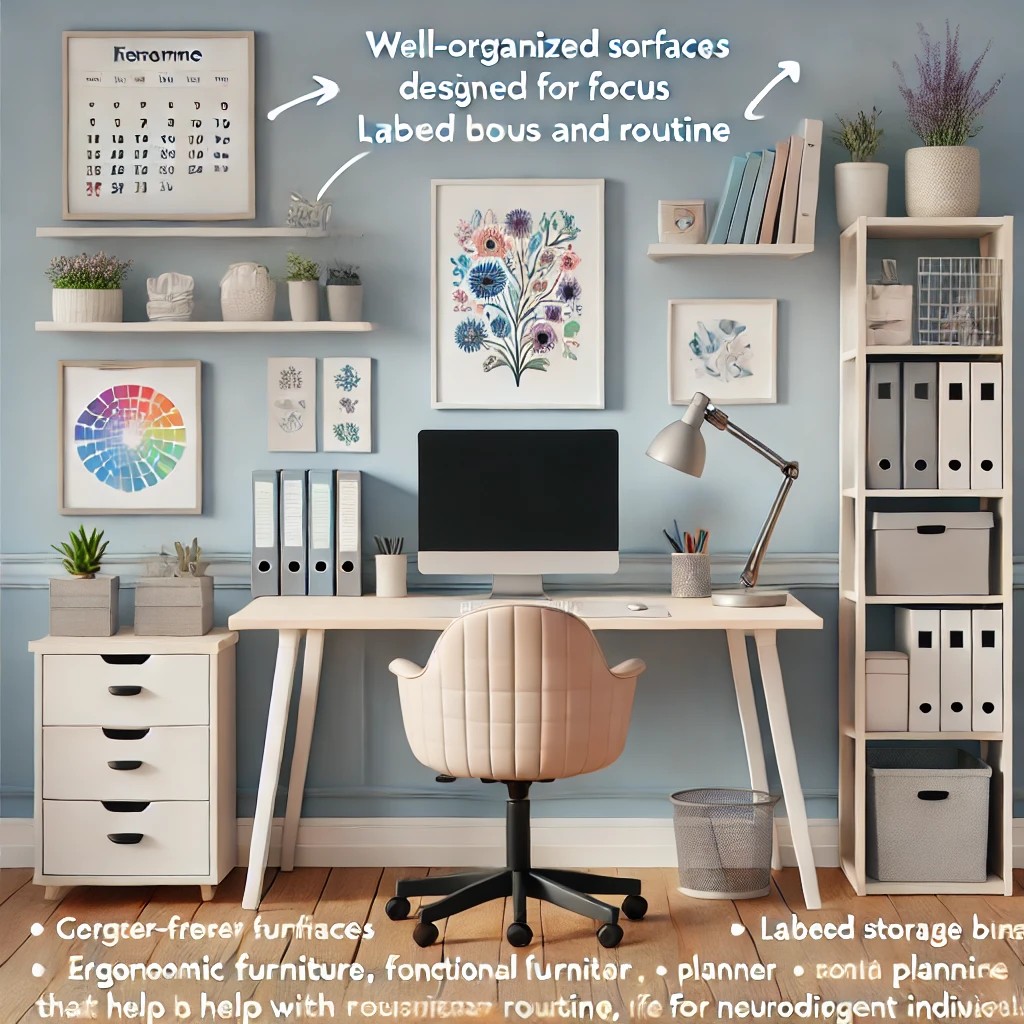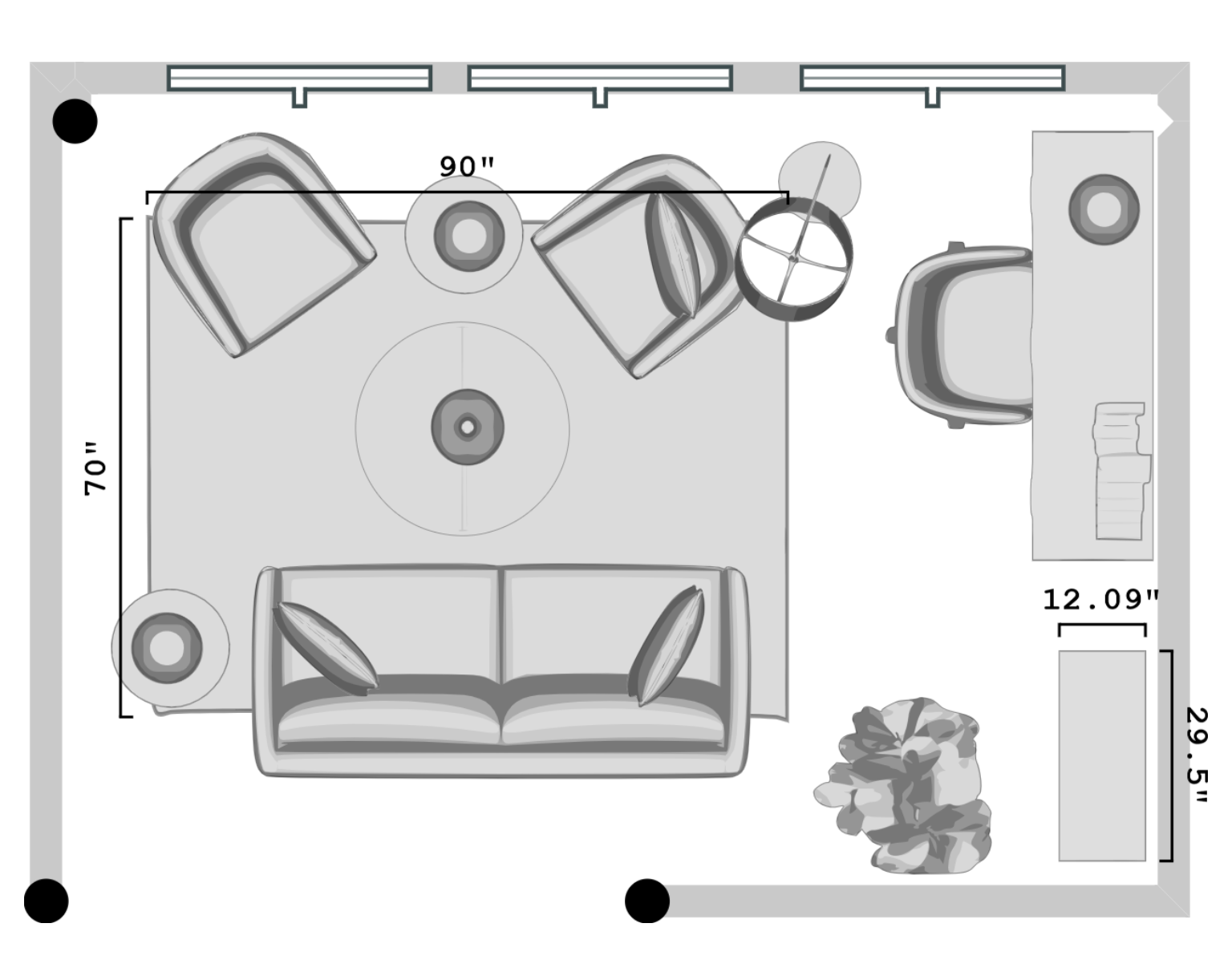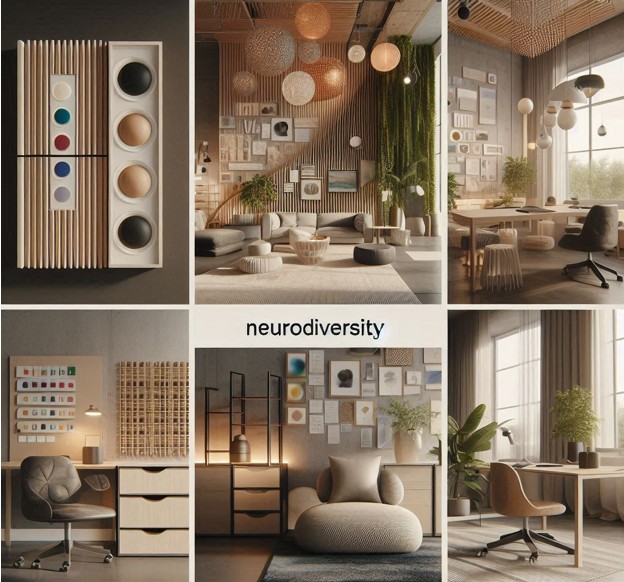Neurodiversity and Interior Design
Exploring the Transformative Power of Neuro-Inclusive Design:
Neurodiversity acknowledges the natural variations in human cognition, recognizing neurological differences as valuable aspects of identity rather than disorders. In the world of interior design, embracing neuro-inclusivity allows us to create spaces that support and enhance the well-being of neurodivergent individuals. Through thoughtful design, we can shape enriching environments that cater to diverse sensory and cognitive needs.
What is Neurodiversity?
Neurodiversity acknowledges the natural variations in our brains, challenging the perception that certain neurological conditions are disorders, instead recognizing them as valuable aspects of human cognition. Key principles of neuro-inclusion involve accepting, respecting, and accommodating these neurological differences.
The neurodiversity movement classifies people into neuro-majority, whose needs are typically met, and neuro-minority, whose needs are often overlooked. While terminology varies, neurodivergent refers to those in the minority, including conditions like autism, ADHD, dyslexia, etc. Approximately 20% of the population is considered neurodivergent.
What is the Difference Between Neurodiverse and Neurotypical?
Neurodivergent people possess unique strengths and challenges associated with their conditions, fostering diversity. Inclusive design recognizes and embraces the diversity brought by neurodivergence. Neurotypical individuals represent the standard neurological makeup. These individuals generally share common cognitive patterns, social behaviors, and communication styles that align with societal expectations. This shared neurotypical experience can create a sense of familiarity and predictability in social interactions.
Why Should We Design with Neurodiversity in Mind?
Neurodivergent perspectives often bring unique insights and problem-solving approaches. By accommodating for neurodivergent individuals with neuro-inclusive design, we not only cultivate enriching environments but also unlock the full potential of their creativity and innovation. Neurodivergent individuals have a tendency to explore rather than exploit, fostering a culture of continuous discovery and adaptation. Embracing neuro-inclusivity is a commitment to unlocking the diverse talents and potential within our communities.


Key Principles of Neuro-Inclusive Interior Design
Creating a neuro-inclusive space involves integrating thoughtful design strategies that prioritize comfort, accessibility, and autonomy. Some essential principles include:
Sensory-Friendly Materials & Colors: Using textures and color palettes that soothe rather than overstimulate.
Flexible Lighting Solutions: Adjustable lighting options to accommodate different sensory sensitivities.
Sound Control & Acoustics: Implementing noise-reducing materials to minimize auditory distractions.
Clear Organization & Spatial Planning: Establishing structured layouts that enhance wayfinding and reduce confusion.
Customization & Autonomy: Allowing individuals to modify their space according to their personal preferences and needs.
Sensory Conscious Home Office – A Client’s Case



Designing for Focus, Comfort & Calm
Here’s a look inside a recent project I worked on: a sensory-conscious home office for a neurodivergent teen—crafted to support focus, relaxation, and organization in one beautifully balanced space.
The Design Approach:
The goal is to create a space that feels safe, calm, and empowering. Every detail is chosen with his neurodivergent needs in mind—helping him regulate, stay organized, and feel at peace in his own environment.
Zoned for Success:
Using clear spatial planning, I defined three key zones:
– Focus Area
– Relaxation Zone
– Organized Storage
A Focus Area with minimal distractions, ergonomic furniture, and access to natural light.
A Relaxation Corner with soft textures, cozy seating, and warm lighting for emotional regulation.
Thoughtful Storage & Organization to reduce visual clutter and create flow.
Color Palette & Mood:
Muted, earthy tones—sage green, taupe, beige, and soft black—to ground the space and reduce sensory overload. These colors support emotional regulation and focus without feeling sterile or overwhelming.
Textures & Acoustics:
To provide sensory comfort, I layered in soft woven textiles, plush rugs, and acoustic wall panels that help absorb sound. These choices support both relaxation and noise sensitivity—two important elements for neurodivergent individuals.
Lighting for Function & Feel:
Lighting varies by zone: Cool, task lighting in the focus zone
Warm, ambient lighting in the relaxation area
Plus plenty of natural light from the beautiful windows to regulate circadian rhythms and boost mood.
Space Planning:
Everything was mapped out to support flow and independence. From desk placement to the orientation of the lounge zone, this floor plan helps minimize distraction and maximize comfort.
Biophilic Elements:
Greenery and nature-inspired artwork bring life into the space while reducing anxiety and improving focus.
This space is a perfect example of how intentional design can transform not just a room—but a daily experience.
Neurodivergent-friendly design means good design for everyone.
Interior Design for the Neurodivergent
If you are neurodivergent, it can be hard to explain what you need to someone who is neurotypical, or you may worry that they won’t understand or have different priorities for what is important in your interior. You might also worry about how you will access their services, how they expect you to communicate with them, or whether you will understand what is expected of you.
Our Design Services for the Neurodivergent:
If you are looking to create a more functional space for someone who is neurodivergent, we can design a space that suits their specific needs while still looking beautiful and feeling comfortable.
Our services include:
- Remodel & Renovation Design Services
- Room Refreshes
- Art, Decor & Furniture Selection
- Floor Plans & Space Planning
- – Accessibility Planning
- – And much more!
Personalized Accommodations for a Seamless Design Experience
We understand that accessing interior design services can feel overwhelming. To ensure a smooth and comfortable experience, we offer accommodations such as:
- Communicating via your preferred method (email, text, social media, etc.)
- Adjusting the level of written detail on design boards
- Providing clear, step-by-step instructions to simplify decision-making
- Offering flexible scheduling to match your peak energy times
- Breaking down video calls into shorter sessions with additional processing time
- Providing follow-up reminders to keep projects on track
We also offer our New Consultation Package. This package is perfect for anyone looking to take the first step toward creating an inclusive, neuro-friendly environment. Contact us today to schedule your consultation and start your journey toward a more supportive space.
Neuro-Inclusive Design Package Consultation
- A one-on-one consultation session to discuss specific sensory and cognitive needs
- Tailored advice on selecting materials, lighting, and layouts that foster comfort and functionality
- Guidance on integrating noise-reduction techniques and sensory-friendly furnishings
- A personalized written summary of recommendations and next steps to transform your space
- This package is perfect for anyone looking to take the first step toward creating an inclusive, neuro-friendly environment.






